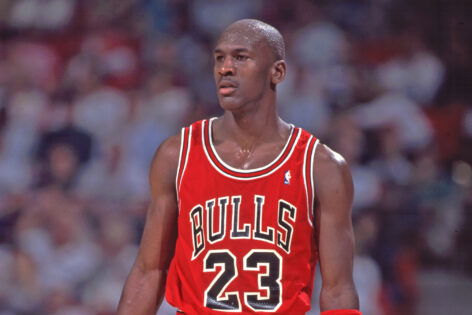When Michael Jordan retired for good in 2003, Nike was naturally worried. Like, how do you keep selling your bestseller without them playing. Most retired athletes don’t get new designs. Many have their signature shoes even discontinued to make way for newer stars. Michael Jordan was the outlier. The Jumpman became more than just a signature sneaker. A $7 billion brand of its own, in fact, that’s second only to the parent company. Something Nike possibly didn’t predict was going to happen when Jordan finally left the court. Yet it’s something they had practice with and prepared for.
The first time though… In 2025, Nike is celebrating 40 years of Air Jordan and bringing back classics in more colorways. 32 years ago this future was almost unanimaginable. Three championships in, Michael Jordan was ready to call it an NBA career in 1993. And Nike was in shambles.
MJ himself described it in his 2005 book, Driven from Within. In an excerpt from that memoir, he said, “We had a big issue when I retired in 1993.” By ‘we,’ he meant Nike. Michael Jordan had announced his retirement from basketball after losing his father. He switched to baseball, a sport his dad wanted him to play. But minor league baseball player, Michael Jordan didn’t have the selling appeal of NBA superstar, Michael Jordan.
“Nike didn’t think the Jordan product would sell if I wasn’t playing basketball,” Jordan explictly wrote in his book. And it wasn’t misplaced fear. Jordan’s first retirement did cause a 22% drop in Nike’s revenue in 1994.
Shockingly, the impact on sales was not the only problem. The Jumpman confessed he and Nike became estranged for a while.
“I kind of lost connection with the brand the year I played baseball,” Jordan admitted and it had nothing to do his semi-retirement. It’s became the Swoosh made a move that wasn’t approved by the face of the brand. “Because we came out with a shoe I didn’t approve.”
Historians would recall that MJ wasn’t just the silent face of Nike. He kept them on their toes from the moment they pitched to him, even trying to go to Adidas before Nike made an offer he couldn’t refuse. Around the time he broke his leg, he was close to leaving Nike. So they sent sneaker design legend, Tinker Hatfield to help him redesign a shoe that was true to His Airness.
Hatfield kept the Jumpman-Swoosh partnership alive. But it wasn’t without issues.
When Nike and Michael Jordan disagreed
In August 2025, the Jordan Brand is retro-releasing the Air Jordan 10 “Steel” in its original glory. No colorways, no add-ons. Just that minimalist design that sent off the erstwhile Chicago Stadium, home of the Bulls till 1994. Michael Jordan, while still playing baseball, made a brief return to the hardwood for a charity game.
Despite wearing the shoes on a landmark occasion, Jordan wasn’t fond of them. Hatfield had designed these 10s privately. Jordan had no input in these. Flights to Birmingham where he played Triple A for a White Sox affiliate weren’t available. So the muse only saw the new AJ10s when they hit the market.
The design was everything His Airness didn’t prefer. He’s detail oriented, that even his tequila brand Cincoro’s famous bottle design has a 23 degree angle at the base.
The stripped down design also represented something else – Nike internally declaring that the reign of the Air Jordan was over. This shoe never even made it to the overseas distributors. MJ claimed he’d never wear these 10s.
As history goes, neither Nike nor Jordan were accurate on either front. MJ wore those shoes to the All-Star charity game hosted by Scottie Pippen. Then he’d unretire in two words – “I’m back” – the following year and win three more championships. And despite retiring again in 1998 and finally in 2003, the Swoosh and Jumpman didn’t divorce. Now the Air Jordan boasts 40 flagship models.
There is a slight alarm about Nike’s revenues till 2024. Yet it commands the biggest chunk of the global sneaker market thanks to the Black Cat. Jordan takes a cool $300+ million a year for sticking around. Which makes that three-decade old hiccup a turning point for the brand.
The post Michael Jordan & Nike Had Big Issues After Company Suffered Massive Financial Loss in 1993 appeared first on EssentiallySports.
